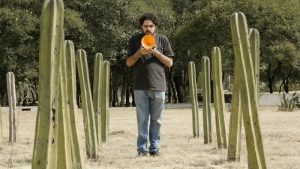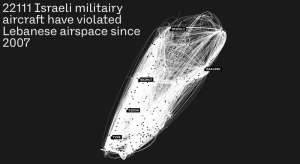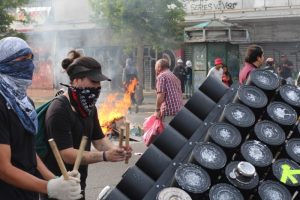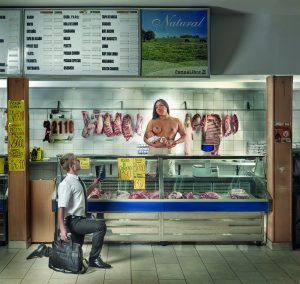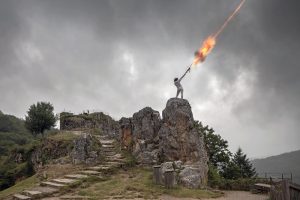As hinted on Tuesday, i’m just back from the opening of Bergen Assembly, a triennial that boldly attempts to challenge and reformulate the good old biennial (or triennial) model.
The event is articulated around three radically different artistic propositions. The one that got all my undivided, unrelenting attention was Tarek Atoui‘s. The sound artist filled an abandoned swimming pool with new instruments, historical artefacts, performances, social moments, ideas and of course sounds that challenge our understanding of the sound experience. He transformed the whole space to engage both the deaf and the hearing people.
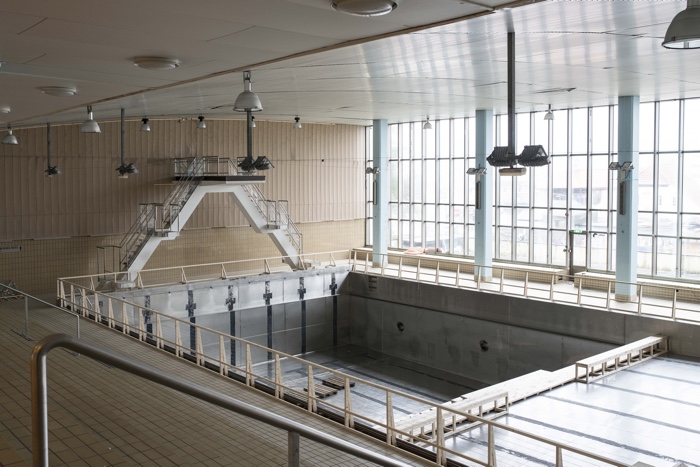
Tarek Atoui & Council, WITHIN/ Infinite Ear. Production Shot, Bergen Assembly 2016 Sentralbadet, Bergen. Photo: Thor Brødreskift
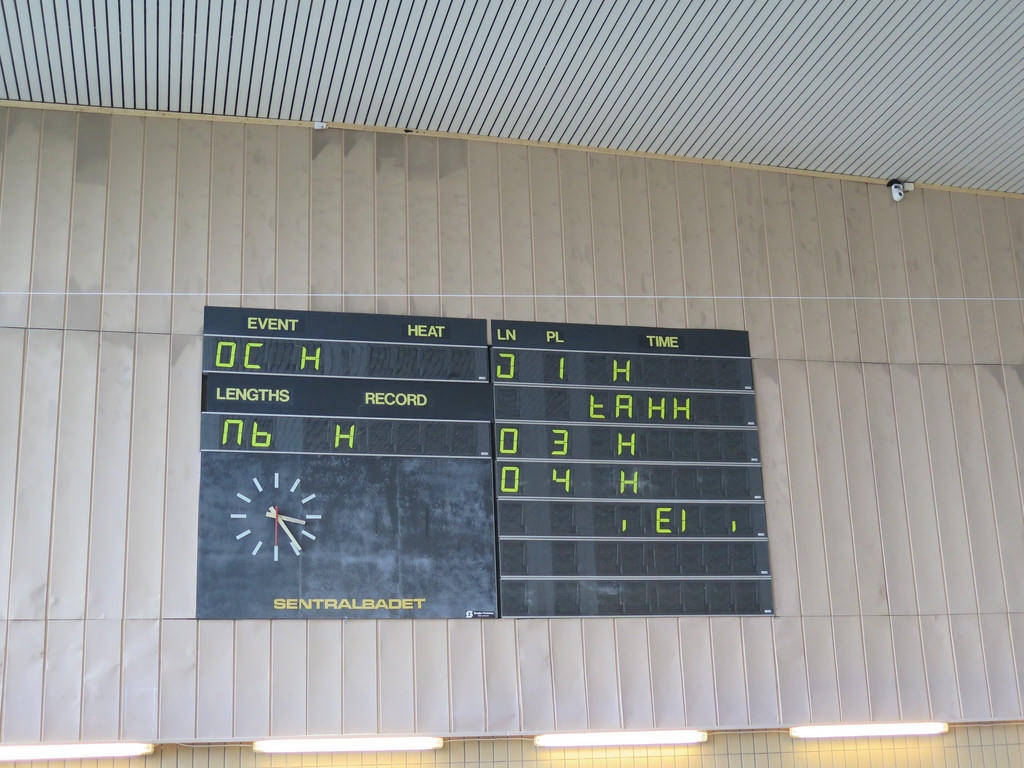
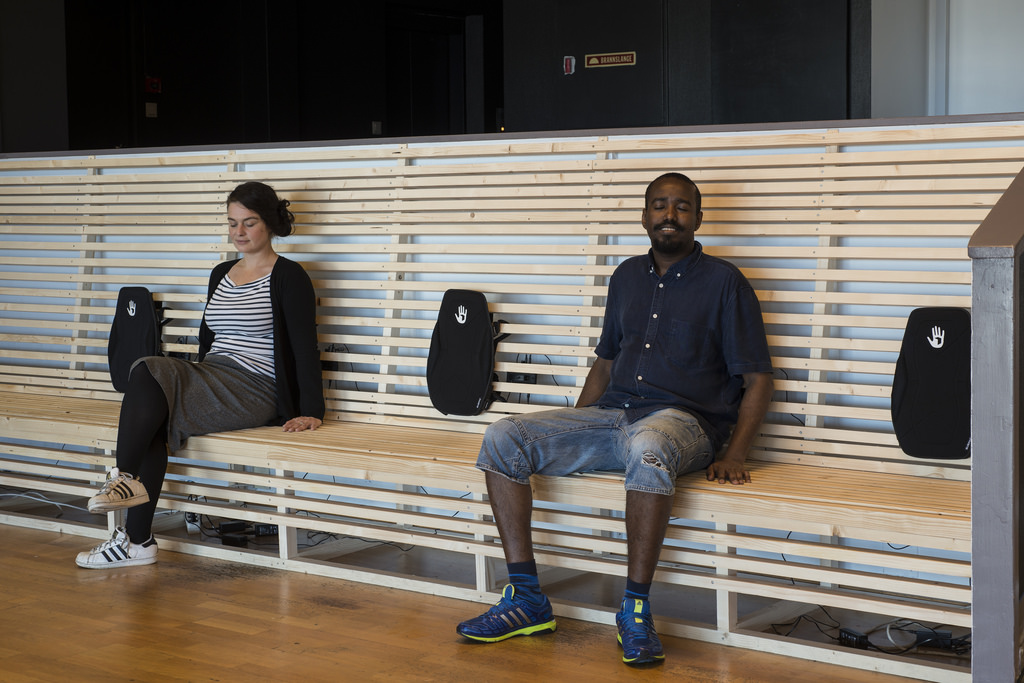
Tarek Atoui / Infinite Ear. Installation shot, Bergen Assembly 2016. Sentralbadet, Bergen. Photo: Thor Brødreskif
Atoui worked with the local deaf communities and with other sound artists to develop the whole project but he also collaborated with Grégory Castéra and Sandra Terdjman from Council, a curating platform that invites artists to reconsider the way we understand social issues. Everywhere i looked in the exhibition curated by Atoui, there was something i wanted to write about. So i’m going to take it quietly and explore the exhibition over two episodes. This one will be about Council’s contribution to the show. The next one will examine the instruments that Atoui developed together with the deaf community of Bergen.
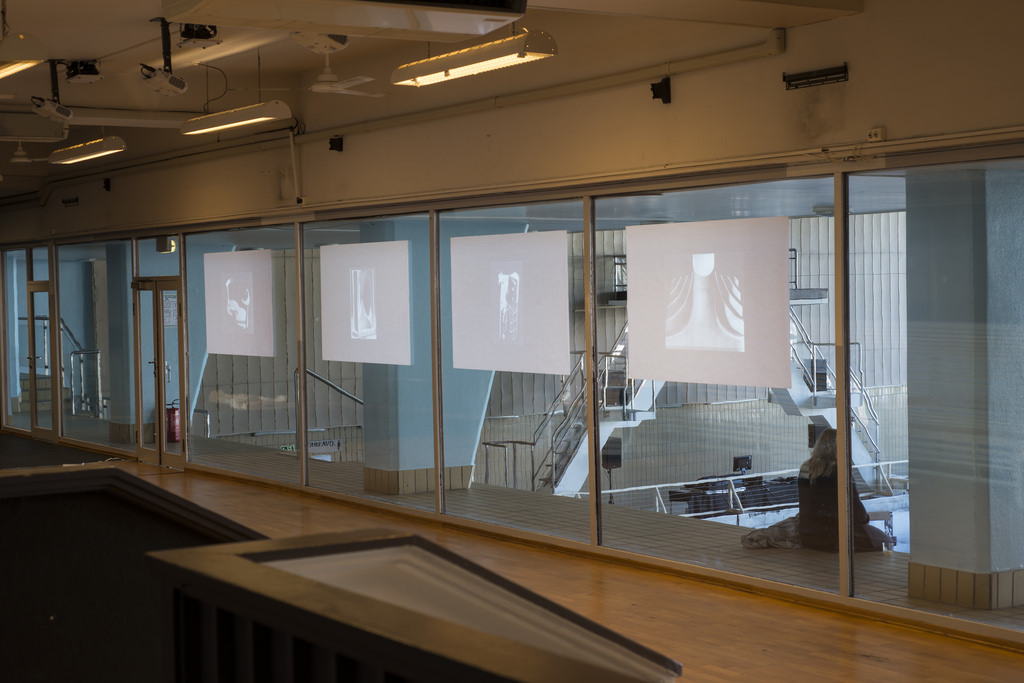
Tarek Atoui / Infinite Ear. Installation shot, Bergen Assembly 2016. Sentralbadet, Bergen. Photo: Thor Brødreskift
For Infinite Ear, their contribution to the show, Council explored what hearing means when it is not confined to the ear, when it involves the other senses and even the whole body. They set up a programme of videos, discussions and performances that will take place throughout the month in Bergen.
Infinite Ear considers practices of un- or para-hearing entities, both biological and technical, that exceed, extend or modulate the modern conception of hearing. These investigations offer new insights into the traditional separation of the senses, and their boundaries, by revealing specific articulations within sensory ecosystems that imbricate more than the five senses.
But Council also curated a small exhibition that starts in the White Cat café, a bar that overlooks the swimming pool. You can sit down and browse a list of sound recordings that make audible a series of phenomena that are otherwise imperceptible to the human ear. Waiters will not only play the sound of your choice in the space but also serve you a drink to enjoy with it. Not any type of drink but one especially selected by a ‘jukebox sommelier’ to play nicely with the sounds.
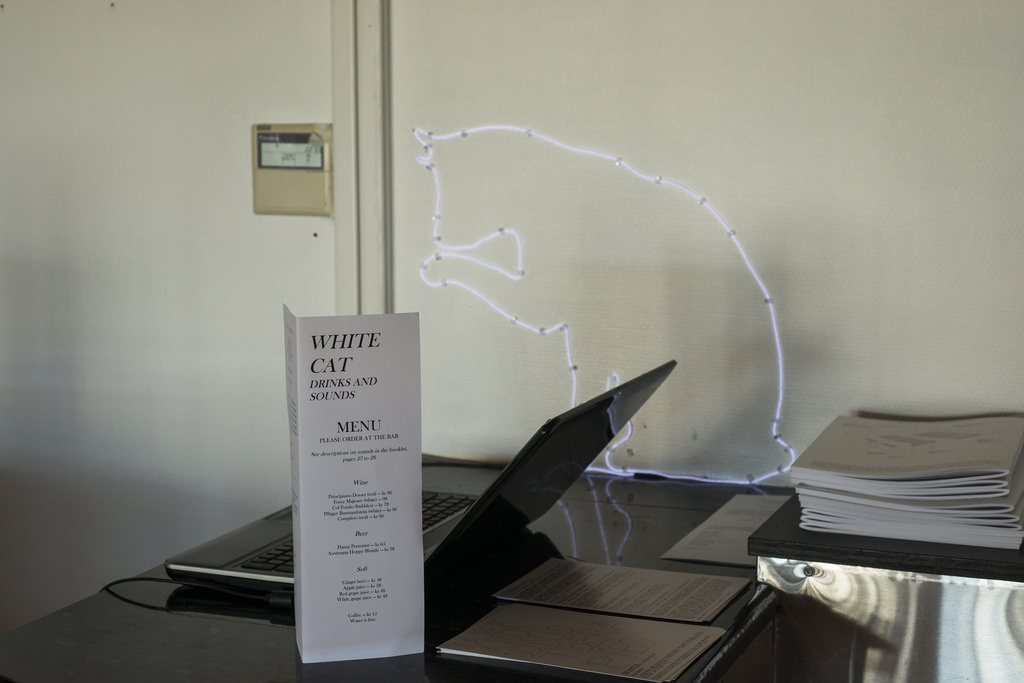
Tarek Atoui / Infinite Ear. Installation shot, Bergen Assembly 2016. Sentralbadet, Bergen. Photo: Thor Brødreskift
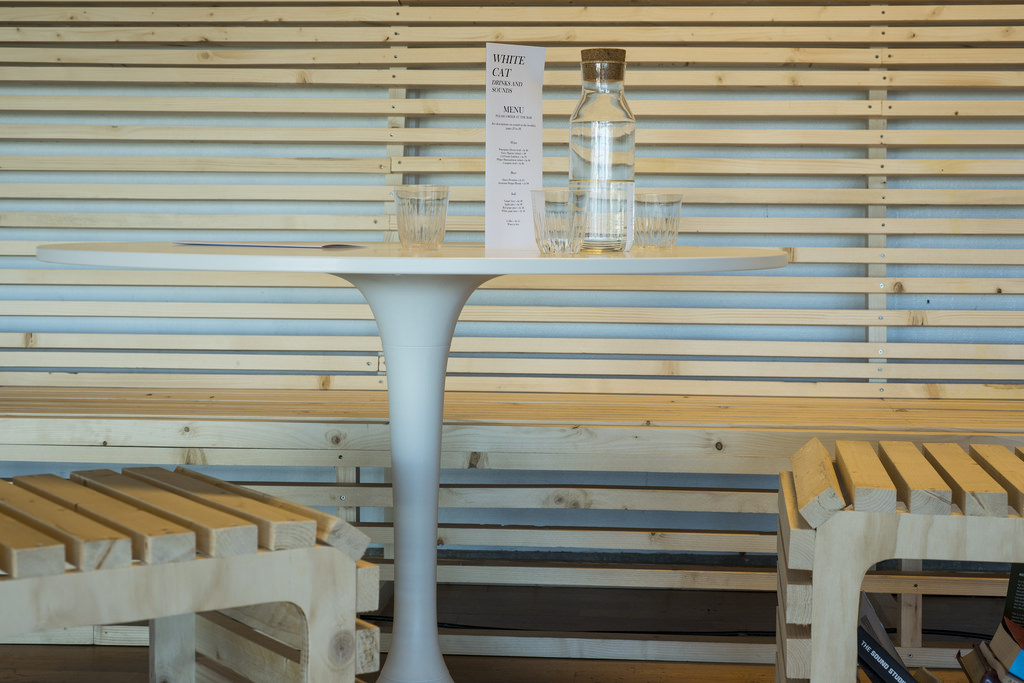
Tarek Atoui / Infinite Ear. Installation shot, Bergen Assembly 2016. Sentralbadet, Bergen. Photo: Thor Brødreskift
The whole sound list is over here. Without the sound though so i’ve looked online and spotted some of the most interesting to share with you:
Scientists at the Laser Interferometer Gravitational-Wave Observatory managed to convert gravitational waves (minute distortions of spacetime predicted by Einstein’s theory of general relativity) sent out from two massive colliding black holes into sound waves. Through converting wave patterns into sound, gravitational wave astronomy, an emerging branch of observational astronomy, is now listening to the universe and expanding our understanding of space.
LIGO Lab Caltech: MIT, The Sound of Two Black Holes Colliding
Jacob Kirkegaard captured the empty and snowy landscape in Fukushima:
Jacob Kirkegaard, Stigma # 1, 2016
Now this one is a bit of a ridiculous story. The Tsar Bell is the largest confirmed bell ever cast at over 200 tons. Because of a mishap in its casting, it never produced any sound and broke in 1732, before it was even struck. It has been on display in the Kremlin ever since. A team of UC Berkeley, Stanford, and U Michigan researchers replicated electronically the sound emitted by the bell.
Chris Chafe and Greg Niemeyer, The Tsar Bell, 10 April 2016
Also worth mentioning: Carl Michael von Hausswolff used emission spectroscopy, “a technique that examines the wavelengths of photons emitted by atoms or molecules,” to make audible the wavelengths emitted by minerals in a gold mine near Medellin. Thomas Tilly used an ultrasonic detector that shifts the ultrasounds emitted by bats to a hearing range, and captured the sounds of the bats’ sonar and their system of echolocation. And finally, the bullroarer. This one is a Stone Age sound instrument used in rituals but also for communicating over great distances. Examples of bullroarers were found in Europe, Asia, the Indian sub-continent, Africa, the Americas, and Australia. A 5000-year-old one was found in Norway in 1991. Here’s what a bullroarer sounds like.
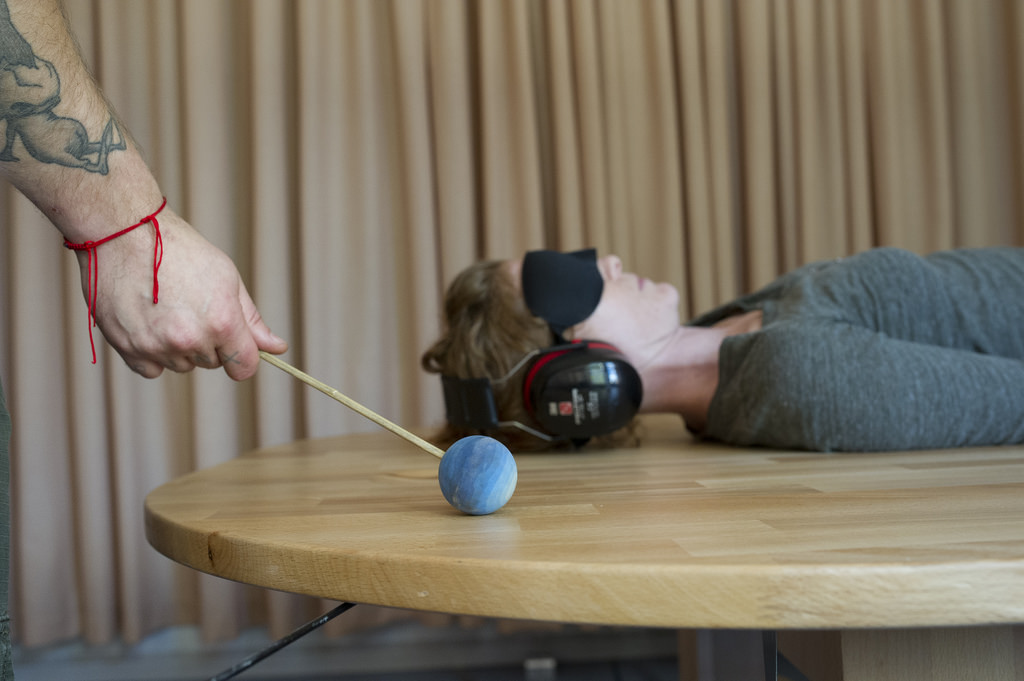
Thierry Madiot and guests, Sound Massage. Installation shot, Bergen Assembly 2016. Sentralbadet, Bergen. Photo: Thor Brødreskift
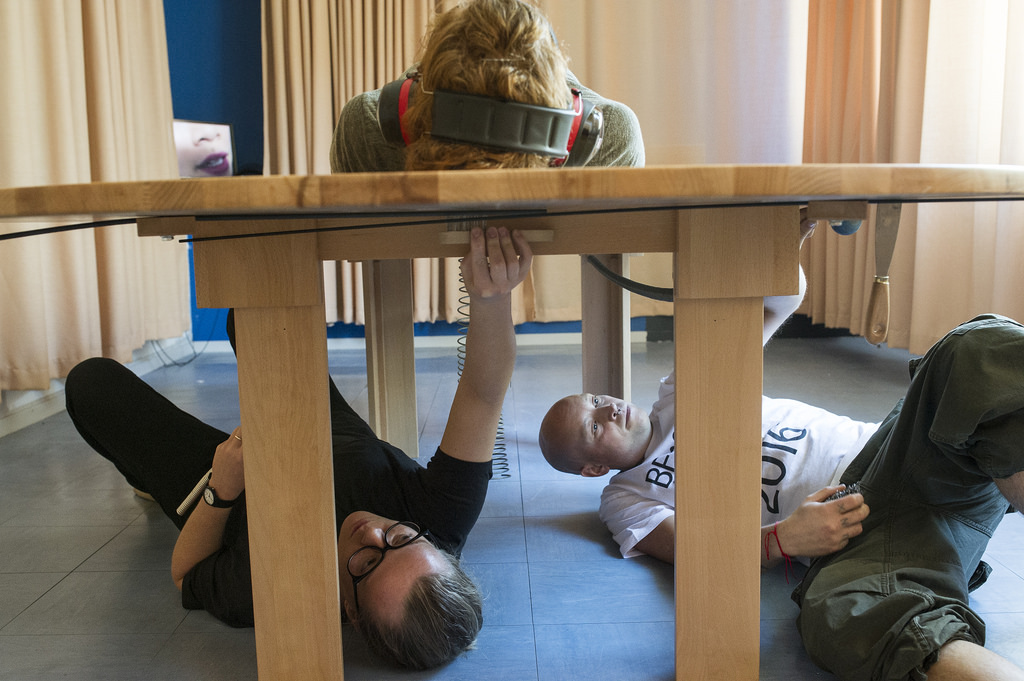
Thierry Madiot and guests, Sound Massage. Installation shot, Bergen Assembly 2016. Sentralbadet, Bergen. Photo: Thor Brødreskift
Also part of the Infinite Ear programme is a series of Sound Massage sessions performed by artist Thierry Madiot and people he trained to recreate them. Almost inaudible sounds are produced using vibration and non-aural techniques. They seem to reverberate inside your whole body and can be perceived by both deaf and hearing audiences.
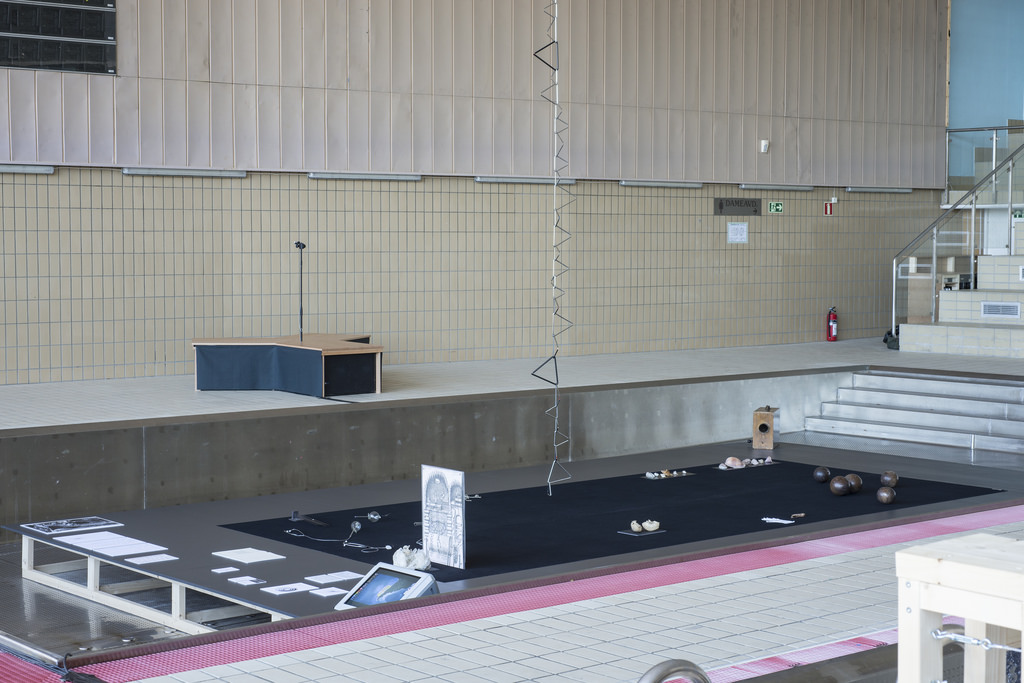
Tarek Atoui / Infinite Ear. Installation shot, Bergen Assembly 2016. Sentralbadet, Bergen. Photo: Thor Brødreskift
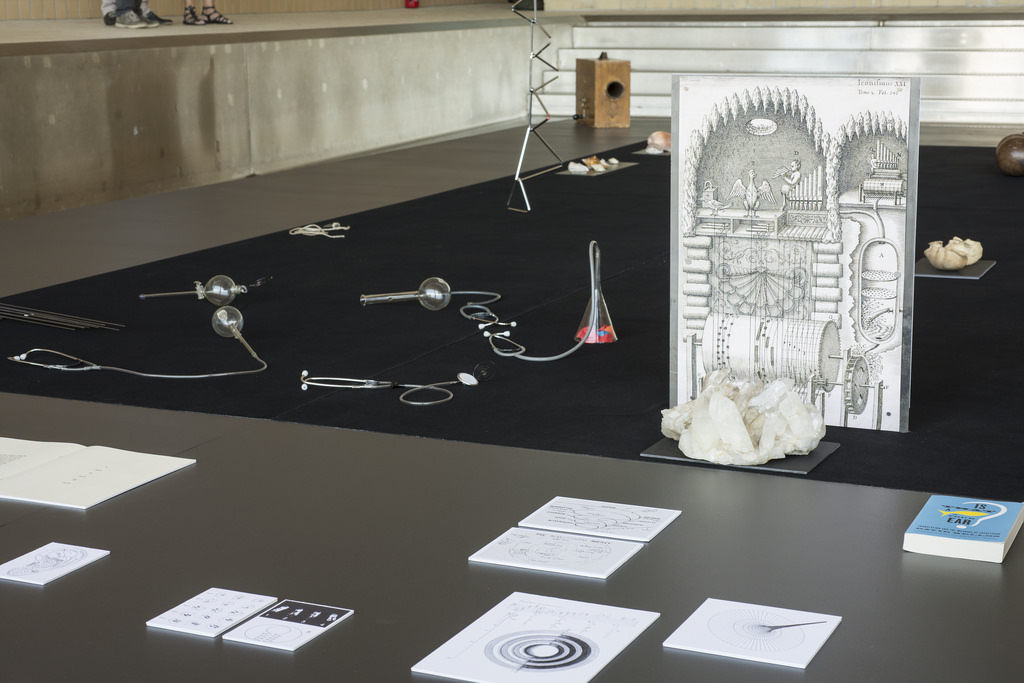
Tarek Atoui / Infinite Ear. Installation shot, Bergen Assembly 2016. Sentralbadet, Bergen. Photo: Thor Brødreskift
Next, Council and Atoui have collected a series of objects, texts and images that they distributed along the café and on the floor of the smallest (and empty) swimming pool. Some were sourced from the Norwegian Deaf Museum, others from the Natural History Museum in Bergen and other institutions.
You discover a lot of curious stories about hearing in this collection. For example, there is the ear drum of a blue whale. It turns out that the blue whale is not only one of the loudest animals on this planet, it also has eardrum that have remained unchanged for thousands of years, making it useful to study the hearing system of dinosaurs.
I also liked this photo of the alarm cushion that illustrate how some deaf people wake up in the morning. When it’s time to get up, a mechanism will push the cushion placed over the bed head and it will fall over the face of the person sleeping:
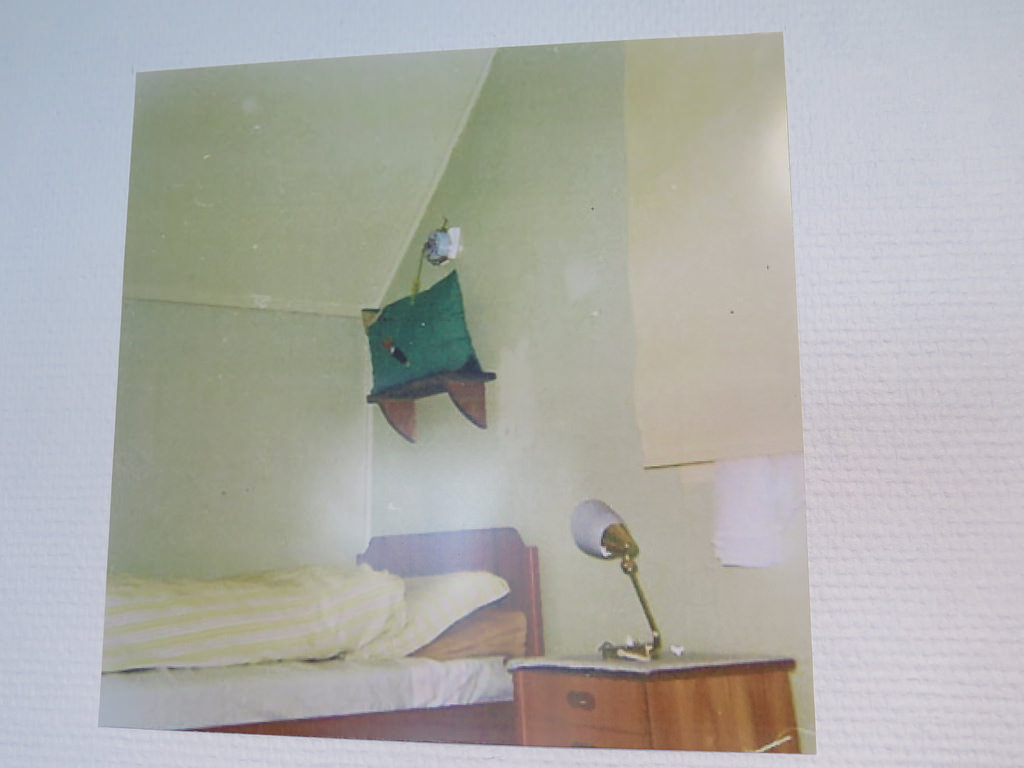
Bespoke Alarm Clock (cushion) from the Norwegian Deaf Museum
The objects also include glass prosthesis by Baudouin Oosterlynck:
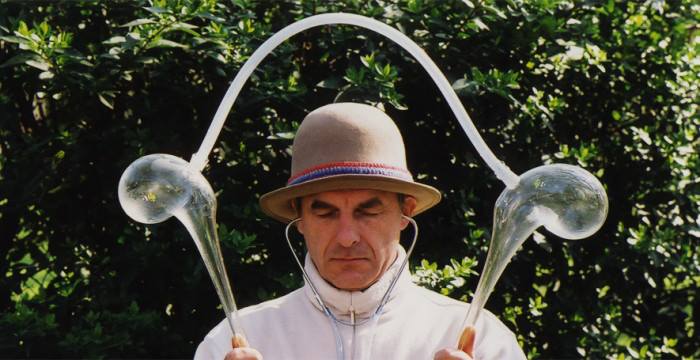
Baudouin Oosterlynck, Aquaphone Cornemuse (not exhibited but i couldn’t find good images of the works on show)
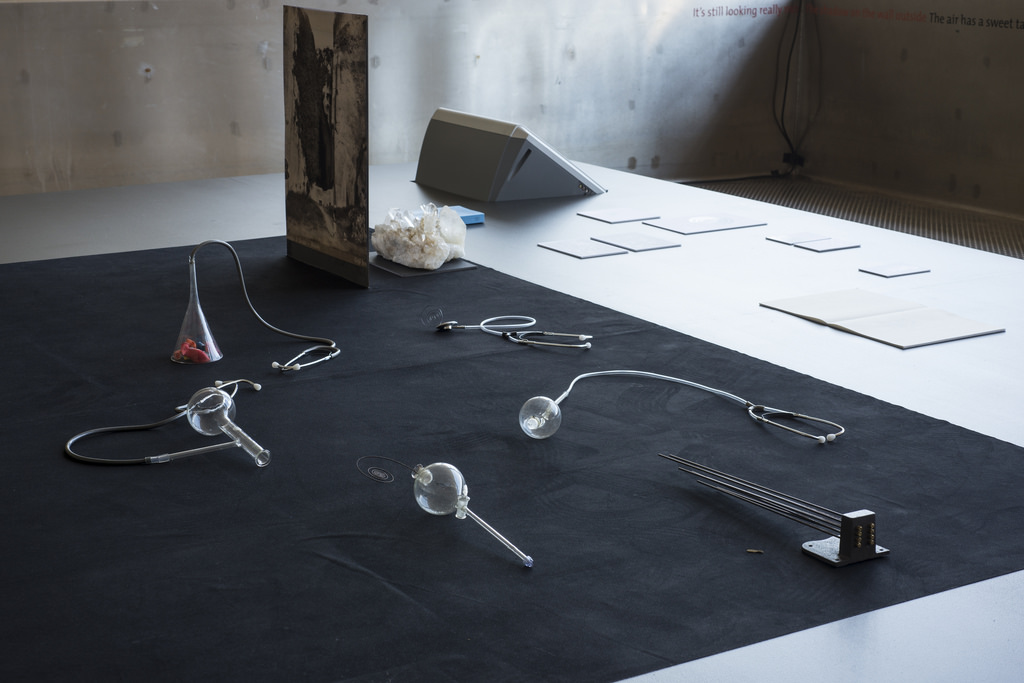
Tarek Atoui / Infinite Ear. Installation shot, Bergen Assembly 2016. Sentralbadet, Bergen. Photo: Thor Brødreskift
A fog horn from MS INNVIK, a car ferry turned theatre and world-music concert venue in Oslo. Foghorns are instruments used to make a loud, deep sound as a warning to ships when the weather is foggy.
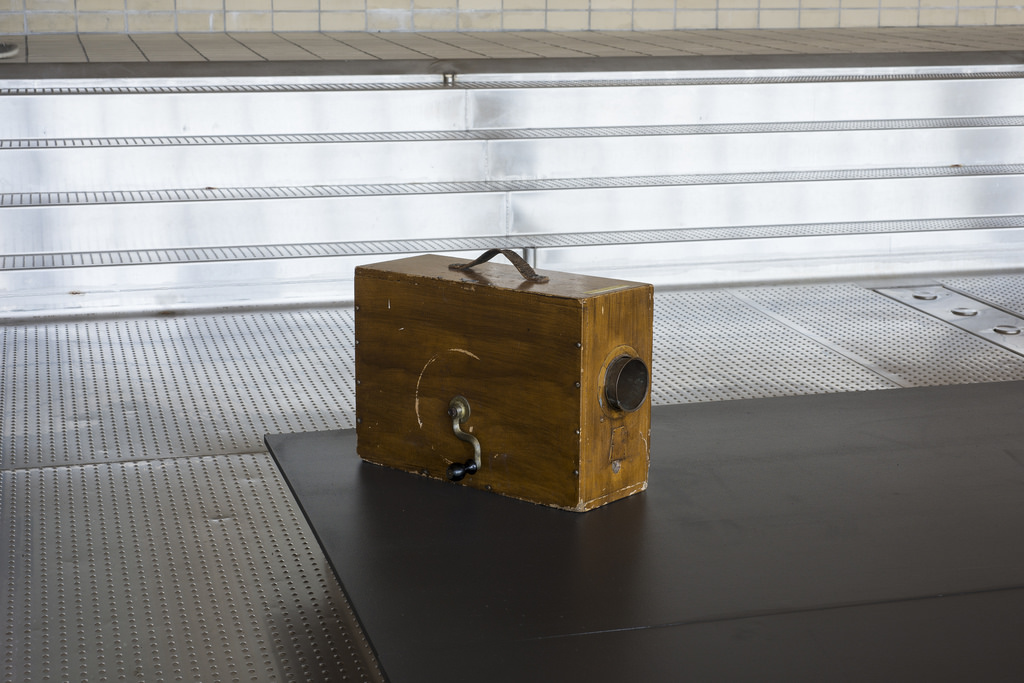
Tarek Atoui / Infinite Ear. Installation shot, Bergen Assembly 2016. Sentralbadet, Bergen. Photo: Thor Brødreskift
A few wooden balls used in the past in theatre to recreate the sounds of a thunderstorm.
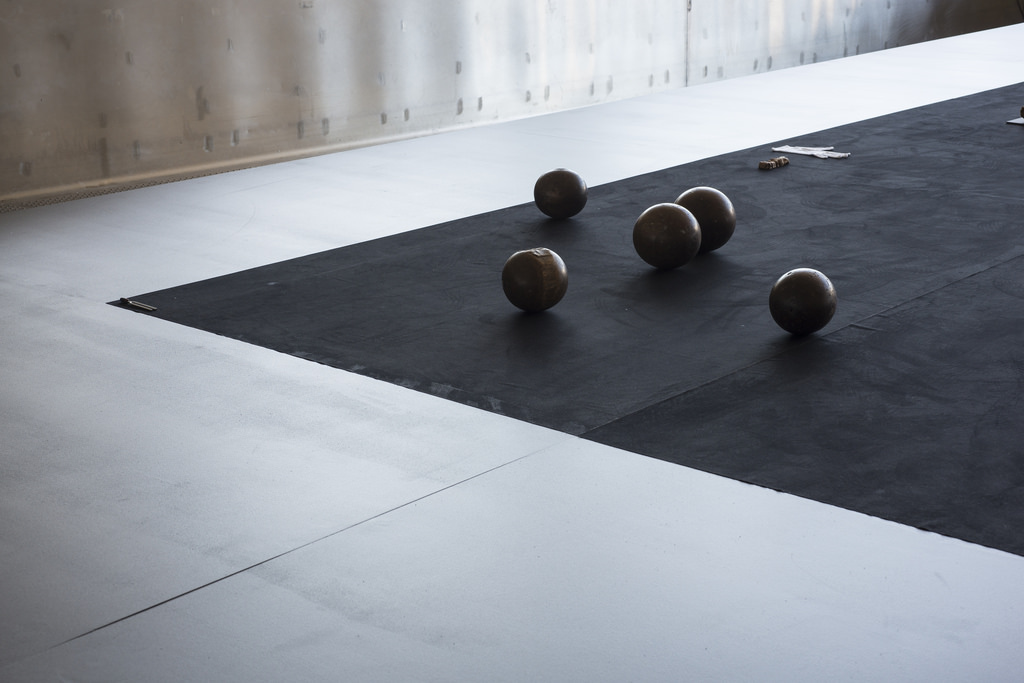
Thunder Clap Balls (theater prop), University Museum of Bergen. Photo: Thor Brødreskift
A series of 236 wooden sculptures made in the early 1970s by Douwe Jan Bakker. They can be placed between the lips, like speech balloons in a comic strip, and provide an alternative visual communication system to express yourself without using words.
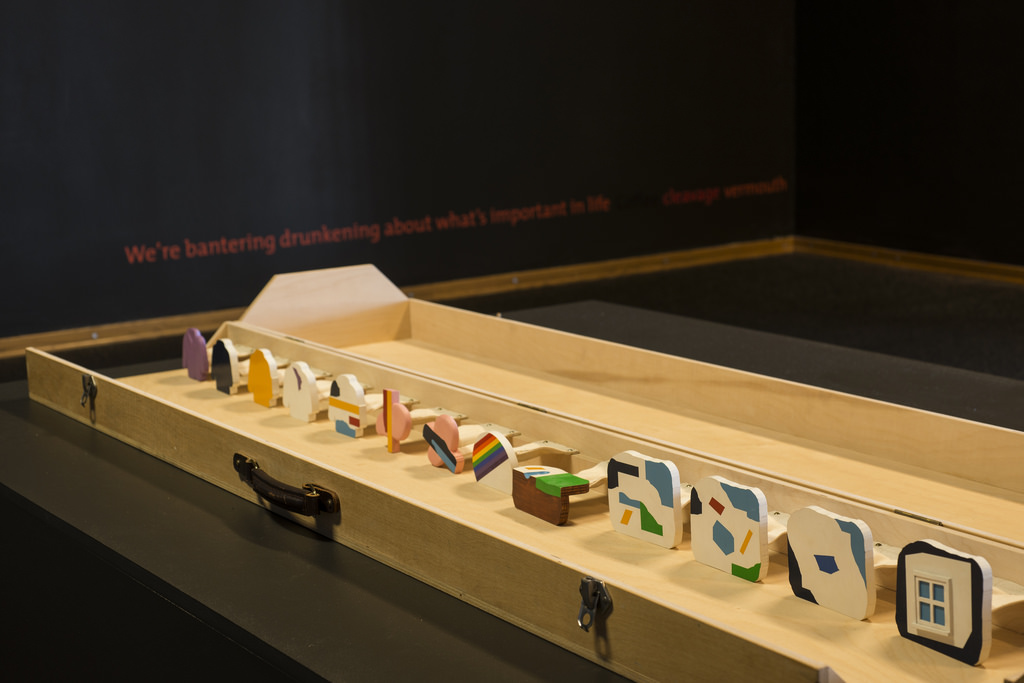
Douwe Jan Bakker, Pronounceable Boxes, 1973-1974. Tarek Atoui / Infinite Ear. Installation shot, Bergen Assembly 2016. Sentralbadet, Bergen. Photo: Thor Brødreskift
Back at the White Cat café, you can borrow a copy of the The Hearing Voices newspaper dedicated to the phenomenon of people who hear voices. Apparently, up to one in 20 people hears voices regularly and up to 40 per cent of the population will hear voices at some point in their lives. Some believe it is a special gift. Others cannot cope with the voices in their heads and develop mental illnesses. The phenomenon is not well understood and social movement have formed to challenge narrow understandings of voice-hearing.
Artist Dora García set up temporary Hearing Voices Cafés in various cities to enable voice-hearers and other people to meet and discuss the experience and hopefully destigmatize it.
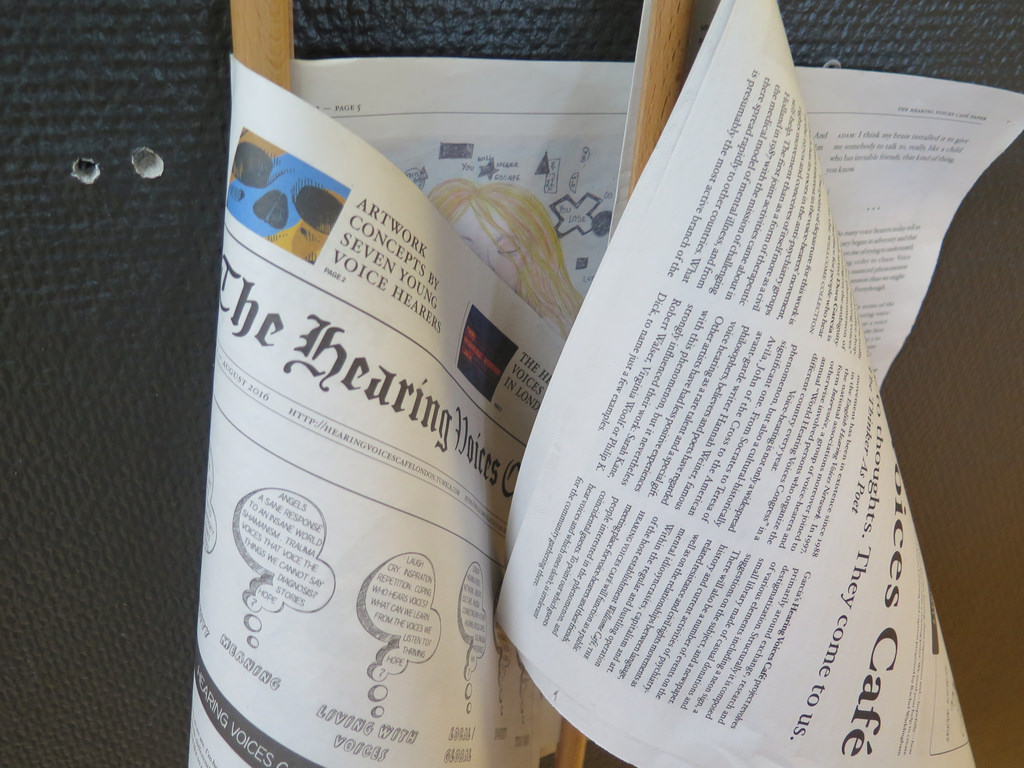
Dora Garcia, The Hearing Voices Café, 2014-ongoing
The list of objects in the collection is online and well worth a careful read.
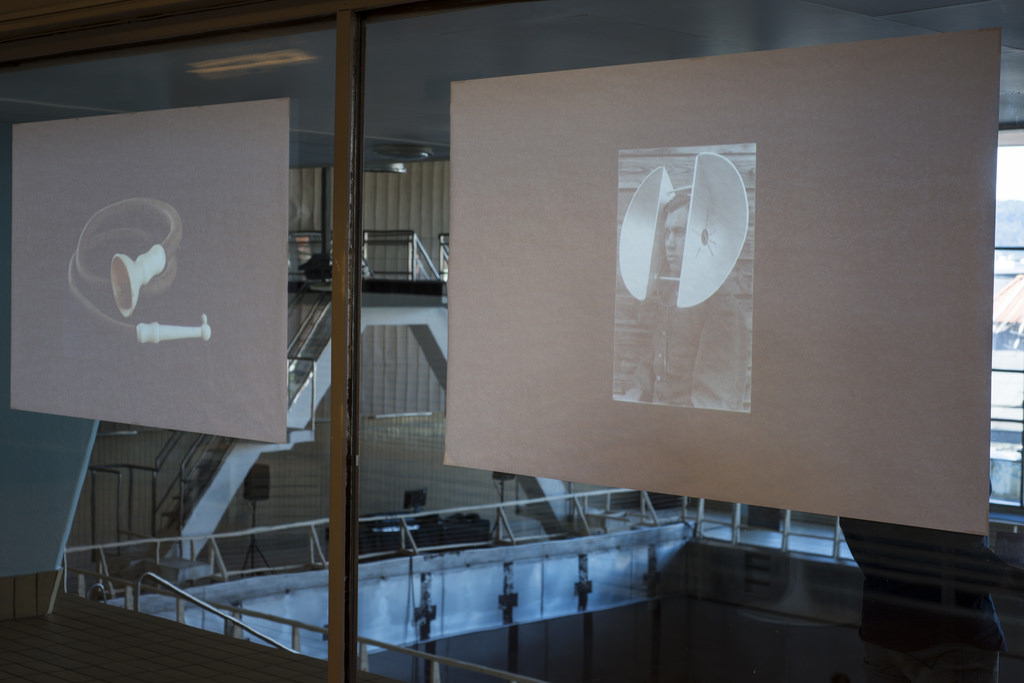
Tarek Atoui / Infinite Ear. Installation shot, Bergen Assembly 2016. Sentralbadet, Bergen. Photo: Thor Brødreskift
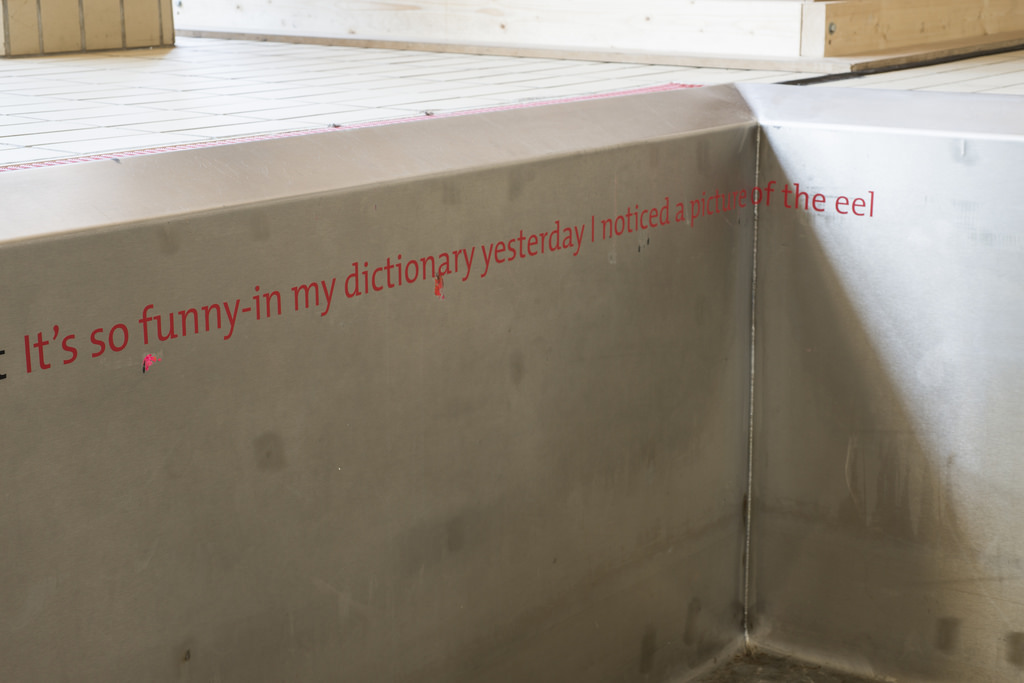
Tarek Atoui / Infinite Ear. Installation shot, Bergen Assembly 2016. Sentralbadet, Bergen. Photo: Thor Brødreskift
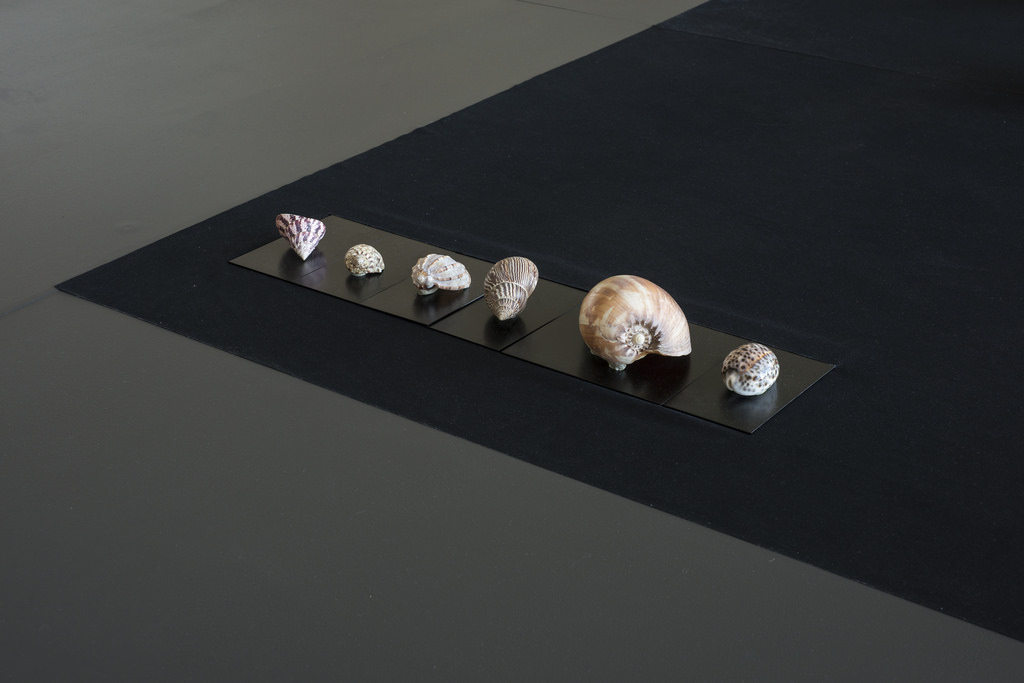
Tarek Atoui / Infinite Ear. Installation shot, Bergen Assembly 2016. Sentralbadet, Bergen. Photo: Thor Brødreskift
The Bergen Assembly takes place in various venues around Bergen, Norway until 9 December, 2016.
Also part of the Bergen Assembly: Bergen Assembly: The End of Oil, the end of the world as we knew it.

